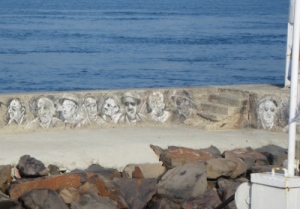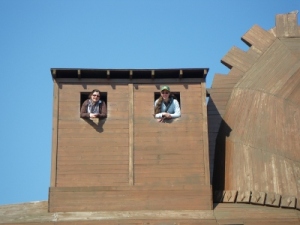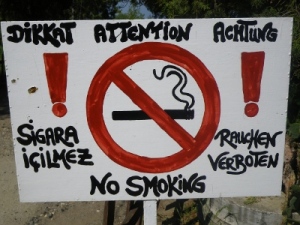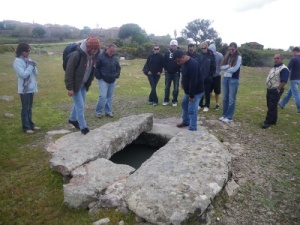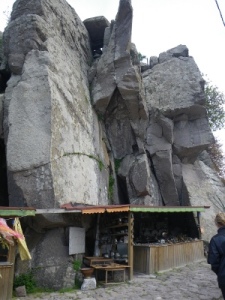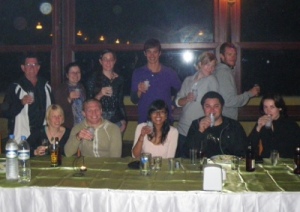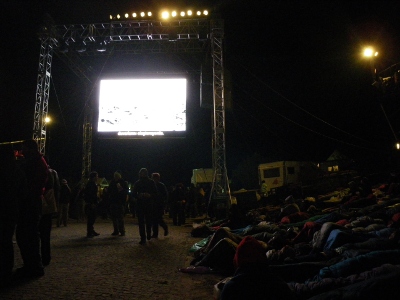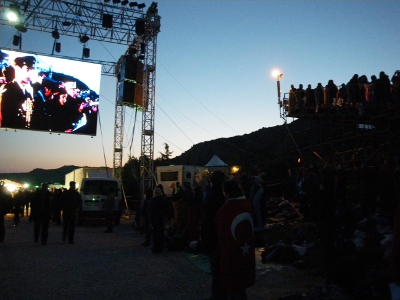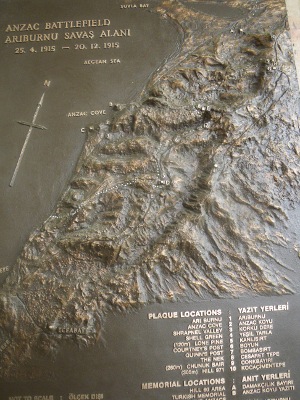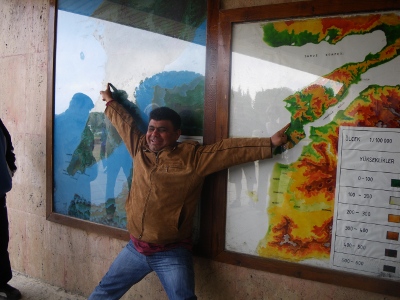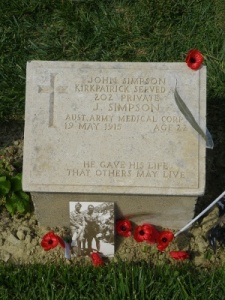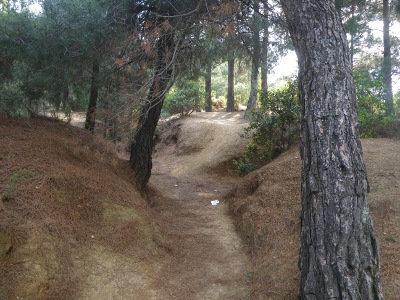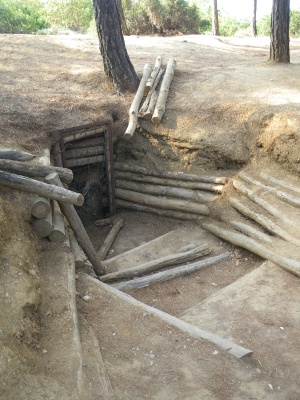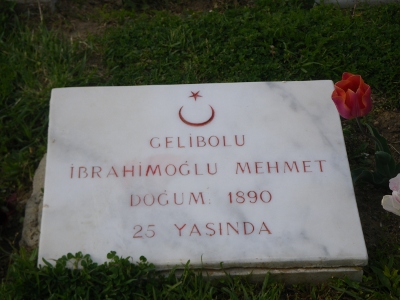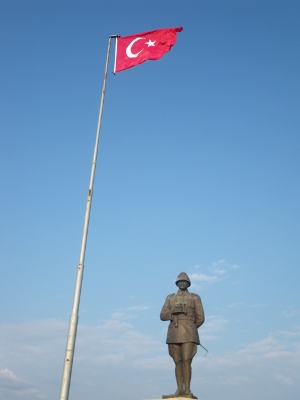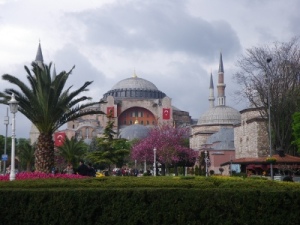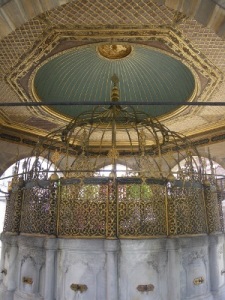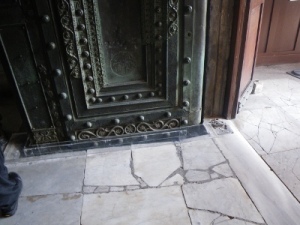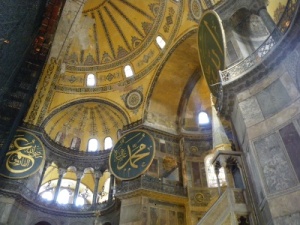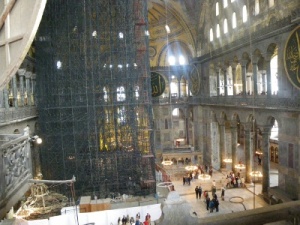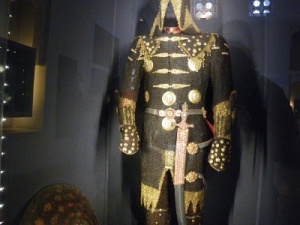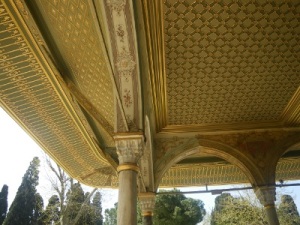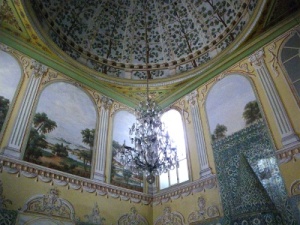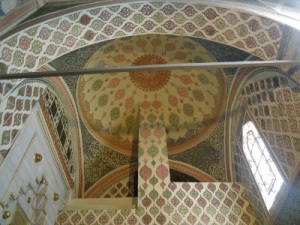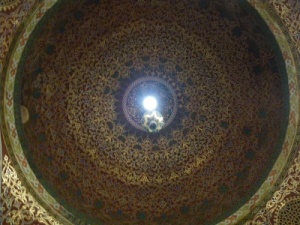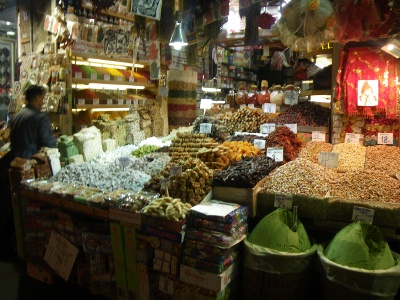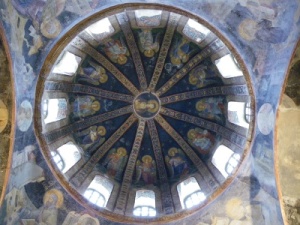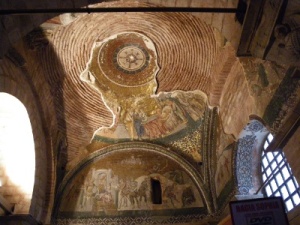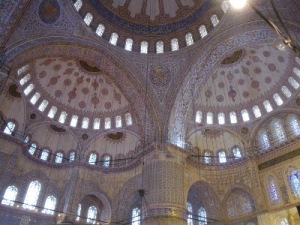Reading: Or, just finished, Peter Carey’s Theft. God, that guy can write great books.
Watching: Schindler’s List. On my iPod. Lieing in a dormitory in Budapest, miserable and hungover. There was crying involved.
Currently …
In a hostel in Krakow. Miles and months away from Turkey, which I’m now going to continue writing about. My photos are back in Belgium, so there isn’t even any Ephesus or Pamukkale photos to show you. However, I’m so completely behind on my blogging I’m going to have get my arse into gear …
Selcuk and Jimmy’s Place
So after TJ’s, I was chucked onto a bus and left in Selcuk, a small town near the outskirts of Izmir (Izmir, from what I saw of it, is a shithole.)
Checked into my hostel/hotel: Jimmy’s Place. I was put into the ‘dormitory’: actually an empty twin bed room; it appears that Jimmy’s, despite other claims, doesn’t have dorms. You’d think ‘great! you got upgraded!’ but not quite: they still charged me for a private. Of course, like most of my dealings with Jimmy’s, I didn’t realise till later that I’d been ripped off. You’d think more of a place that is supposed to have links with foreigners (Jimmy’s brother has a Kiwi wife). The hotel itself was nice enough, though everything there was expensive (food, wine) and the breakfast was great (filtered coffee! Yes!) However, I think I should have been alarmed that there appeared to be only 10 guests out of a possible capacity of 50 or 60.
Similarly, I should have been on high alert when Jimmy pulled us aside and said, yes, I am not joking, ‘Want to buy a carpet?’. Turns out Jimmy has a carpet shop in a back room – no pressure! no hassle! Well, he did convince Surly Greg to buy one; I instead got hassled because I insisted I didn’t want to buy a rug because I had no house. ‘Most people who buy rugs from me,’ he told me, ‘have no house.’ He even showed us pictures of all those people who bought rugs without having houses. He keeps them in photo albums on his desk, grouped by nationality. Greg was his first Scottish customer, which I suspect had more to do with Greg buying a carpet than anything else*.
Anyway, my main disastisfaction with the place was Jimmy’s brother, who said he would ‘help’ me organise my onwards travel. In fact, he bullied me into taking their tour to Pamukkale, and staying there an extra night. I managed to stop him from bullying me into booking my Cappadocia trip with them. In the end, I overpaid by about 50lira for a tour to Pamukkale and a bus ticket to Goreme; I should have gone with my original instinct, which was to organise it all myself. To top it off, I realised later that Jimmy’s bro had charged me another night’s accommodation – and at a higher rate than I’d agreed in the first place. Wonderful. No wonder I was pretty bitter on the bus to Pamukkale, especially when I found out what everyone else’d paid. But more on that later.
My first wonder of the world …
One of the Seven Wonders of the World is in Selcuk …

The Temple of Artemis! (Photo stolen from Flickr).
Okay, so nothing expressly fantastic, a column and a lake. It’s all that’s left of the apparently massive Temple of Artemis. Woo hoo. Now it’s surrounded by dodgy old men with dirty beer bellies poking from the bottom of their tops selling plastic Artemis’s, statues with large penis’s* and 1 lira postcard booklets.
Ephesus
You go to Selcuk purely to see Ephesus (Efes), one of the largest and best preserved Graeco-Roman ruins in the world. It has – not one but two!!! – theatres***, colonnades of columns, and lots of rocks. There’s the ruins of a Mary church, and I think Mary maybe died here in popular legend? It’s a fantastic site, and I am so ecstatic I did it without a guide (one good thing about Jimmy’s place: they’re good on lending you books to explore the local area, so armed with an Ephesus book, I got to see everything – just backwards, as I came in the exit entrance).
One thing exceptional about Ephesus is the ‘Library’, a magnificent facade as beautiful and preserved as the Treasury in Petra (though not as big). It was covered – covered – in German and French tourists, and I found it difficult to get a decent photo:

The Library, at Ephesus.
No, it’s not artistic blurring, it’s finger marks on the lens (I didn’t realise till later).
Anyway, it’s an awesome site, huge, though I would recommend entering through the uphill entrance. The entrance at the bottom of the hill is more of an exit. You’ll be fighting thousands of tour groups who are coming downhill if you go to the exit-entrance – like I did.
Be warned however:
1. Don’t buy a genuine-fake watch and walk down the Ephesus main street while looking at it, therefore tripping and re-breaking your arm (hey Carla?)
2. Don’t take the bus, it’s only 4km away, and if you don’t walk, you won’t be able to see the Second Brothers tomb.
3. Don’t get a guide. Turkish guides suck. Sorry guys, but it’s pretty much universal. Every Turkish guide (excluding TJ in Gallipoli and a nice funny guy I had in Cappadocia on the Green Tour) we had was dreadful. Unfortunately, by national law, the only guides allowed to operate in Turkey are Turkish. Just take a really good guidebook, you’ll get better, more accurate and more detailed information (‘This is the Temple of Hercules. This is the drain in the Temple of Hercules. This is a column.’ Thanks for that.)
There is, a little off the way, a place calle dthe ‘Cave of Seven Sleepers’. Grotty, less presentable, and aimed at the locals (not to mention absolutely empty), the site is mildly interesting. However, there was a really homey Turkish food place at its base, with decent Gozleme, which I quite enjoyed.
The Shishas, before they were Shishas.
I did end the day in a good mood, though absolutely exhausted. I sat down in the TV area, which was crowded with one girl wearing a cast on her arm, another with her ankle strapped, and a grumpy looking guy with glasses. They turned out to be in a tour group, and besides these injuries, there was also another tour member at hospital, recovering from a bacterial infection picked up in Burma.
It turned out they were going to Syria after Turkey as well. Really? I asked. What tour group? Tucan? No fucking way.
By complete coincedence I ran into the Turkey leg of the tour group I was going to be meeting up with in Syria (or, in particular, Brett the Vet, Bronny, and Surly (and broken armed Carla) – later we’d get the nickname the Shishas, make several Macca’s runs just before the first am call to prayer, get in trouble for knocking on doors, shop for a wife for Brett the Vet in local bazaars, and take photos of giant rock penises, but at this time we all marvelled at the coincedence of running into each other, and went to bed.
Pamukkale

Pamukkale terraces – with dog.
Pamukkale is a volcanic hot springs site, where calciumnated water flows out, creating these awesome white terraces. You can walk along and swim within some of them (in any of them if you’re a slutty Mexican in a bikini, apparently). Romans built a spa in the vicinity (Hierapolis), and it’s awesome to walk along the ruins and actually find the rift which destroyed it. There’s a swimming resort (the ‘Cleopatra’ pool), which is only interesting because the hot spring water is naturally carbonated: want to swim in soda water? It’s also the only water in Turkey you can drink without getting sick. There is a theatre, a colonnade of columns and a temple***.
I went to Pamukkale the next day, taking the Jimmy’s Hostel recommended day trip tour, the one I’d been overcharged for. The tour guide, as many would prove to be in the Middle East, was awful: a rude arrogant shit who got grumpy at some clients for asking questions about what was involved in the tour, and yelled at a girl who was walking too slowly towards the bus (‘Time is money!’ Fuck head). This was before we’d even left Selcuk; clearly, being trapped with this turd as well as overpaying for the tour made my day; I found I was praying for the end of his tour, and the few glorious hours I would be alone.
‘Lunch is included! Wonderful Turkish lunch’, Jimmy’s brother had declared when he was trying to con me into taking the tour. Hmm. The lunch was ‘buffet’, but it was clear when we arrived how the tour operators made their money: drinks weren’t included, and they expected 5lira per glass of water, 8 per glass of coke, and 10 per glass of wine or beer. This, in a near empty restaurant that clearly only served tour groups. My mood (fueled by 1) being ripped off on the cost of the tour, 2) shitty tour guide, and now 3) shitty food and overpriced drinks) didn’t improve.
Our shitty tour guide took us through the gates to Hieropolis (‘That is the theatre’, ‘That is the west gate’, ‘That is a temple’), told us he’d buy a cup of tea to the first person to the top (he didn’t), made us sit for fifteen minutes in full sun while he talked in his bad English (‘That was the road,’ ‘That was the tombs’, ‘That was the spa’), took us in to see the Cleopatra pool (’23 lira per swim!’). Then he mercifully left those of us going on to Goreme to our own devices. I so wish I’d visited the place on my own.
I did meet three nice Muslim South Africans on the tour, who gave me a lot of tips about travel destinations in the Middle East, told me never to go to South Africa (so violent and dirty) and rolled their eyes the same as I did at the flirty Mexican princess who swam in the banned Pamukkale ponds in a bikini (instead of pulling her out, the security guards took photos – even grosser, so did her ‘dad’. Ummm).
I sat and watched what little of the sunset was visible behind the fog, and headed down to the bus station. I ate an overpriced Ottoman kebab (served in a stone pot – nice!) and hopped on the Dolmus (minibus) that took me to the overnight bus to Goreme …
_________________________________
* One thing aside from my sarcasm: I might even contact Jimmy in the future to organise the purchase of a rug through mail order. When I actually have a house. Shame, shame, shame.
** A local souvenir from Selcuk, little men with big penises are modelled after the statue of fertility god Bes found in the Ephesus site, and now on display in the museum I didn’t go to visit.

*** As Brett the Vet would put it, I am now ‘ruined’ out. There’s only so many times you can see Roman ruins and be enthusiastic about it: they all have bloody theatres, bloody colonnades of columns, bloody temples, and lots of bloody rocks lying strewn around.




